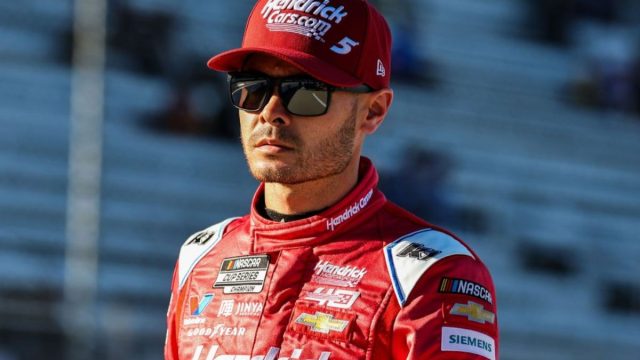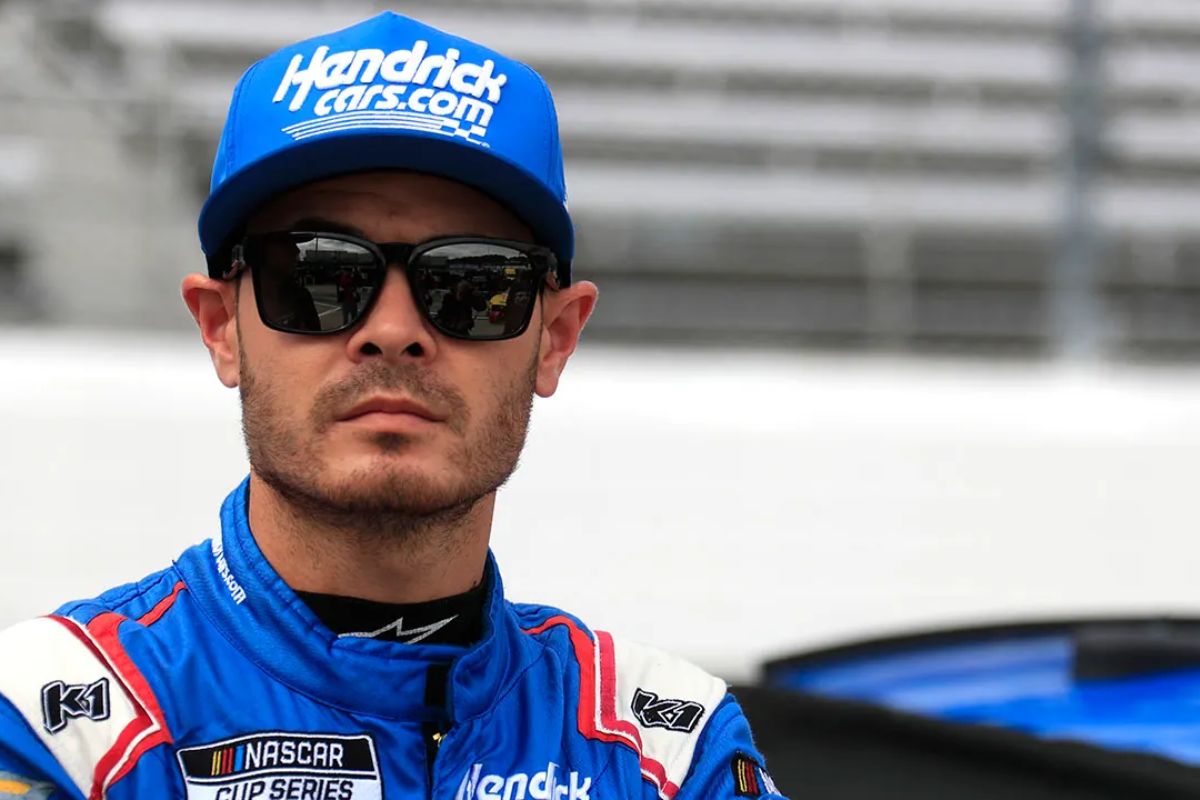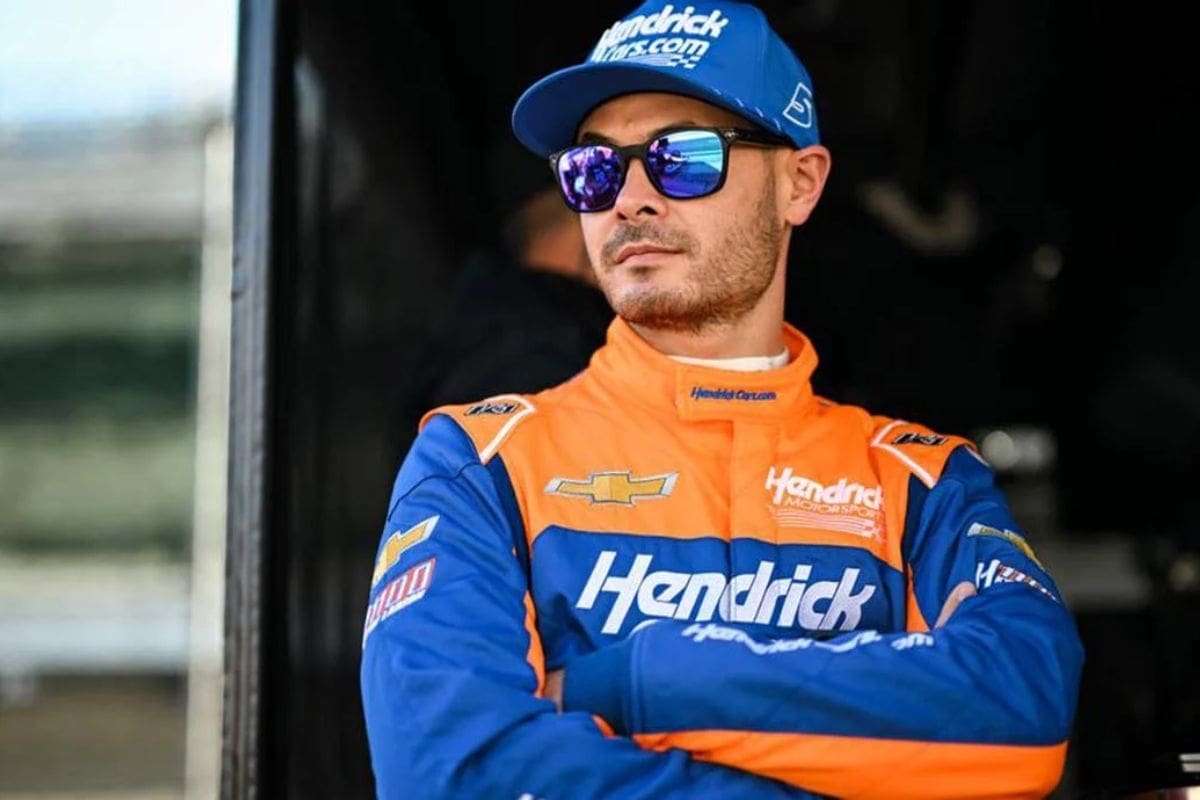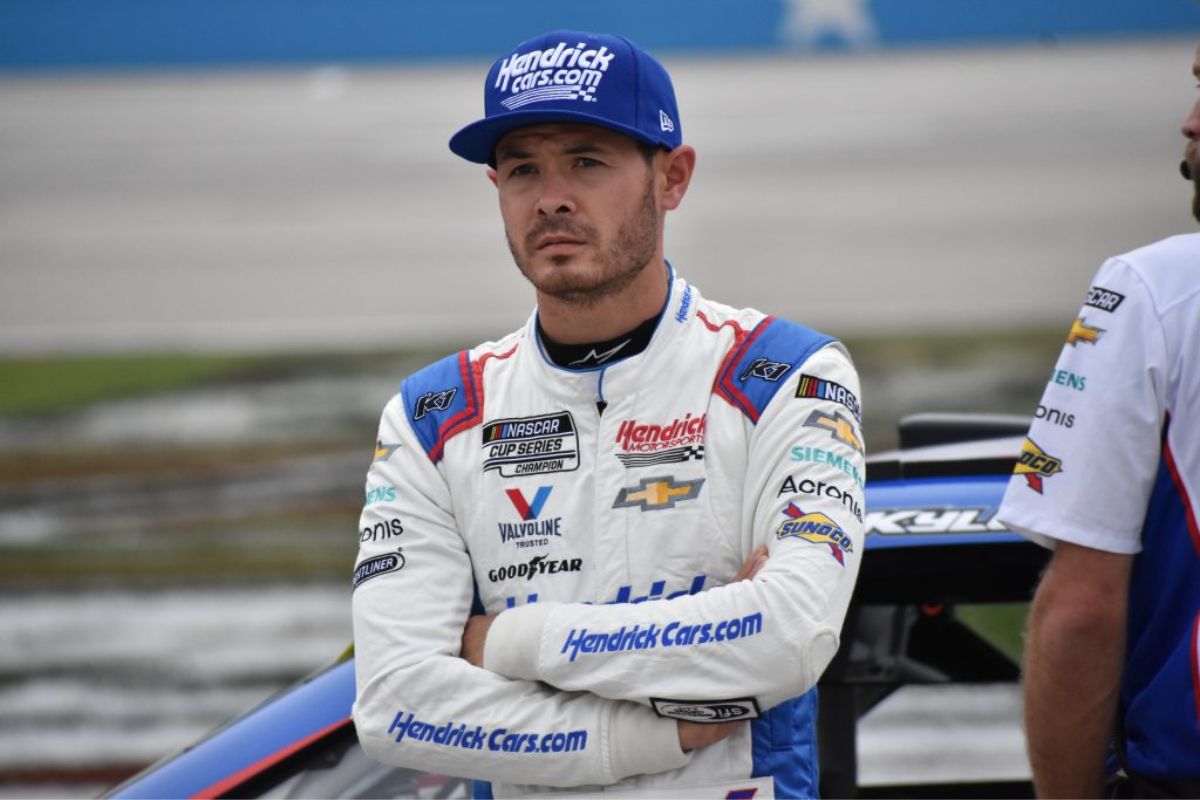Kyle Larson Uncovers Safety Hazards: In motorsports, the recent decision by NASCAR to alter track configurations, driven by Kyle Larson’s disclosure of concerning safety data, has sparked a significant debate among stakeholders. Larson’s detailed analysis, supported by personal g-force data collection, highlights critical vulnerabilities that could amplify the risks drivers face on the circuit. This move by NASCAR, while aimed at enhancing safety, prompts a deeper examination of the effectiveness of such changes and their potential to introduce new hazards.
Key Takeaways
- Kyle Larson used personal safety data to advocate for track modifications at Watkins Glen.
- NASCAR adjusted the Bus Stop curbing in response to Larson’s data highlighting high g-force spikes.
- Modifications include rumble strips and a ‘turtle’ curb aimed at improving safety and competitive balance.
- Concerns exist about sausage curbs, which can cause severe accidents and pose risks to drivers.
- There is an ongoing need to reassess track safety features, like sausage curbs, to ensure they effectively enforce limits without compromising safety.
Watkins Glen Layout Changes
In January, Watkins Glen International introduced significant modifications to its track configuration, with the most notable change being the inclusion of rumble strips at turn 1 and the controversial placement of a ‘turtle’ curb at the entrance of the Bus Stop chicane, eliciting mixed reactions from the racing community. This alteration is part of a broader strategy to improve the track’s safety and competitive balance, yet its implications extend beyond mere surface adjustments.
The rumble strips at turn 1 are engineered to deter drivers from cutting corners too closely, a common tactic that can lead to dangerous collisions or loss of vehicle control. By adding these strips, the track administrators aim to enforce a cleaner racing line, which could potentially reduce the frequency of race disruptions and increase the overall flow of competition.
Driver Reactions to the Changes
Driver reactions to the recent modifications at Watkins Glen International have been sharply divided, with some expressing skepticism and others, like Kyle Larson, showing strong support based on performance data. The changes, primarily involving the installation of new curbing, have sparked a range of opinions among the drivers, highlighting the complexities of track safety and performance metrics.
- Critical Voices: Connor Zilisch of Trackhouse Racing voiced a straightforward critique, encapsulated in his statement, ‘If it ain’t broke, don’t fix it☹️.’ His comment reflects a broader sentiment among drivers who see the modifications as unnecessary, potentially introducing new risks rather than mitigating existing ones. Parker Kligerman expressed concern via social media with his post, “Oh no… @WGI what have you done?!” This reaction suggests apprehension about the practical implications of the changes on race dynamics and driver strategy.
- Concerns from Broader Driver Community: Other drivers from the ARCA and Xfinity series have also shared their discontent with the changes. Their collective unease points to a significant portion of the racing community feeling unsettled about adapting to the altered track conditions. This group’s reaction is pivotal as it represents a diverse cross-section of experience and expertise, which could influence the acceptance of the track modifications.
- Analyzing the Split Opinion: The mixed reactions suggest a deeper need for a thorough assessment of how track changes affect vehicle dynamics and safety protocols. It highlights the importance of involving drivers in the decision-making process, ensuring that modifications improve rather than compromise the racing experience.
My mouth piece data from last year through the bus stop. Something needed to be done. What was there before was not safe for the brain. Hopefully this is better. pic.twitter.com/AjpN7unIsb
— Kyle Larson (@KyleLarsonRacin) April 25, 2024
Kyle Larson’s Support and Data
While opinions on the Watkins Glen International track modifications vary, Kyle Larson’s endorsement, supported by his personal safety data, brings a distinctive perspective to the debate. Larson, a prominent figure in NASCAR, utilized the data collected via a specialized mouthpiece that measures g-forces, particularly during collisions.
“My mouthpiece data from last year through the bus stop. Something needed to be done. What was there before was not safe for the brain. Hopefully, this is better.”-Larson
Larson’s data contribution is essential, especially considering the frequency and intensity of g-forces recorded during races. The data extracted from his mouthpiece shows significant spikes in g-force each time his car navigated through particularly treacherous sections of the track.
| Aspect of Data | Implication for Safety |
|---|---|
| G-force Levels | High levels indicate potential risk to driver health, especially brain health. |
| Frequency of High G-Forces | Regular exposure could lead to long-term neurological issues. |
| Location of Impact | Specific track sections, like the bus stop, are more hazardous. |
NASCAR’s Response to the Data
NASCAR’s proactive adjustments to Watkins Glen’s infamous bus stop curbing, driven by compelling data from Kyle Larson’s mouthpiece exemplify the organization’s dedication to improving driver safety. The organization’s response was not merely reactive but was guided by a systematic analysis of biometric data, which highlighted a pattern of safety concerns specifically associated with this section of the track. This strategic initiative highlights NASCAR’s approach to integrating technology and real-time data into their safety protocols, setting a new benchmark in motorsport safety measures.
“Yes, the mouthpiece data from Larson (and all those who wore it) necessitated this move. We saw that an abnormally large number of ‘incidents’ were triggered in this area. Credit to NASCAR safety team and the drivers who participated in this mouthpiece program. It was an initiative started to continue improving on safety, and this is one of the results.”-Spokesperson told TobyChristie.com,
- Data-Driven Decisions: The decision to modify the bus stop curbing was directly influenced by the data collected from mouthpieces used by Larson and other drivers. This data revealed an unusually high number of incidents in this particular area, prompting an immediate and well-informed response from NASCAR’s safety team.
- Collaboration with Drivers: NASCAR’s approach was not unilateral; it involved active participation and input from the drivers themselves, who were equipped with the mouthpieces during races. This collaborative effort not only enhanced the data’s reliability but also ensured that the drivers’ firsthand experiences were factored into the decision-making process.
- Continuous Safety Evolution: The modifications at Watkins Glen are part of a broader initiative aimed at continually advancing safety standards. By leveraging cutting-edge technologies and thorough data analysis, NASCAR remains at the forefront of safety enhancements, demonstrating a commitment to the well-being of its drivers and setting a precedent for other racing leagues.
Concerns and Risks of Sausage Curbs
Sausage curbs, despite their intended safety function, frequently lead to severe accidents, as evidenced by instances where vehicles are propelled into dangerous trajectories upon impact. These track features, originally designed to deter drivers from cutting corners, have manifested unintended hazardous consequences. Connor de Philippi, an IMSA BMW factory prototype driver, cited a harrowing incident at Monza in 2022, where a car struck a sausage curb at an unfavorable angle, resulting in it being launched into the air and flipping upside down.
The fundamental issue with sausage curbs lies in their dual nature. Conceptually, they are supposed to penalize improper track navigation without the extensive use of gravel traps, which can themselves pose risks. However, their practical application often transforms them into inadvertent ramps. This transformation not only compromises the safety of the drivers but also challenges the very premise of their installation.
Given these observations, it is imperative for governing bodies in motorsports to reassess the deployment of sausage curbs. Alternatives that do not compromise vehicle stability or driver safety must be considered. The goal should be to enforce track limits in a manner that is both effective and safe, ensuring that safety mechanisms do not paradoxically increase danger.
News in Brief: Kyle Larson Uncovers Safety Hazards
The adaptation of Watkins Glen’s layout, prompted by Kyle Larson’s safety data, highlights the delicate balance between innovation and safety in NASCAR. The introduction of sausage curbs, while aimed at improving safety, also presents new risks, requiring thorough evaluations and adjustments.
This situation emphasizes the significance of ongoing collaboration between drivers and regulatory bodies to refine safety protocols and ensure that improvements effectively mitigate risks without introducing unforeseen hazards.
Our Reader’s Queries
Q. How much money did Kyle Larson make last year?
A. In the realm of NASCAR earnings, the figures tell a compelling tale: Joey Logano leads the pack with $10.2 million, closely trailed by Kyle Larson at $10.1 million. Martin Truex follows closely behind with $9.9 million, while Matt Kenseth rounds out the group with $9.0 million in earnings. These figures offer a glimpse into the financial landscape of professional racing.
Q. What was the penalty for Larson at Bristol?
A. A pit road penalty marred Kyle Larson’s performance as a tire inadvertently encroached into the neighboring pit stall of the No. 15 car during its entry into the box. This infraction resulted in Larson’s demotion to the rear of the field, placing him in the 28th position for the crucial restart on lap 380.
Q. Did Larson get a penalty?
A. NASCAR’s announcement revealed that Kyle Larson will face a challenging start in Sunday’s Cup race at Talladega, as he’s slated to begin from the rear of the field. Additionally, he’ll serve a pass-through penalty, stemming from an issue uncovered prior to Saturday’s qualifying session. These setbacks pose significant obstacles for Larson as he navigates the high stakes of race day.
Q. How many races has Kyle won?
A. Throughout his illustrious racing career, Kyle Busch has amassed an impressive total of 230 victories across NASCAR’s top three series. Among his notable achievements, Busch boasts 63 wins in the NASCAR Cup Series, solidifying his status as a formidable force on the track. Furthermore, he holds the esteemed title of all-time wins leader in both the Xfinity Series, with an impressive tally of 102 victories, and the Truck Series, where he boasts an impressive 66 wins. Busch’s remarkable success underscores his prowess and dominance across multiple racing platforms.
ALSO READ: Kyle Larson Honors Terry Labonte: Epic Darlington Tribute



